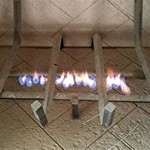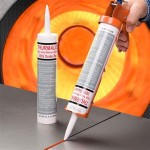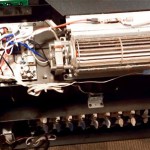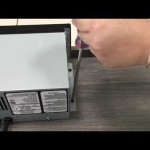```html
Outdoor Fireplace Cement Logs: A Comprehensive Guide
Outdoor fireplaces provide warmth, ambiance, and a focal point for outdoor living spaces. A crucial component of any outdoor fireplace is the log set, and cement logs have become a popular choice due to their durability, realistic appearance, and minimal maintenance requirements. This article will explore the various aspects of outdoor fireplace cement logs, including their benefits, types, selection criteria, installation considerations, and maintenance tips.
Benefits of Cement Logs for Outdoor Fireplaces
Cement logs offer numerous advantages over traditional wood-burning fireplaces. One of the primary benefits is their longevity. Unlike real wood logs that burn away, cement logs are designed to withstand high temperatures and repeated use without significant degradation. This makes them a cost-effective option in the long run, as they do not require frequent replacement. The material composition, typically a blend of cement, aggregates, and reinforcing fibers, ensures structural integrity even under extreme heat conditions.
Another significant advantage is the low-maintenance nature of cement logs. They do not produce ash, soot, or creosote, eliminating the need for regular cleaning and chimney maintenance. This reduces the overall operational cost of the fireplace and minimizes the effort required to keep it in good working order. Furthermore, cement logs are resistant to pests and decay, common problems associated with natural wood.
Cement logs also offer a more environmentally friendly option compared to burning wood. They do not contribute to deforestation and reduce the emission of harmful pollutants into the atmosphere. By using cement logs, homeowners can enjoy the warmth and ambiance of a fireplace without the negative environmental impact associated with burning wood.
Finally, cement logs offer a consistent and predictable flame pattern. Unlike natural wood, which can burn unevenly and produce unpredictable flames, cement logs are designed to distribute heat evenly, creating a stable and aesthetically pleasing fire. This predictability enhances the overall experience and allows for more controlled heat output.
Types of Outdoor Fireplace Cement Logs
Outdoor fireplace cement logs are available in a variety of styles, sizes, and configurations to suit different fireplace designs and aesthetic preferences. Understanding the different types of cement logs is crucial for selecting the right option for a specific outdoor fireplace.
One common type is the traditional log set, which mimics the appearance of natural wood logs stacked in a traditional fireplace arrangement. These sets typically consist of multiple logs of varying sizes and shapes, designed to create a realistic and visually appealing fire. The logs are often molded and painted to resemble different types of wood, such as oak, birch, or pine.
Another type is the contemporary log set, which features a more modern and abstract design. These sets often incorporate geometric shapes, clean lines, and minimalist aesthetics. They are ideal for modern outdoor spaces and fireplaces with a contemporary design. Contemporary log sets may be made from different materials or finishes to complement the overall aesthetic of the space.
In addition to traditional and contemporary sets, there are also specialized log sets designed for specific types of fireplaces, such as linear fireplaces or fire pits. These sets are often custom-designed to fit the unique dimensions and requirements of the fireplace. They may feature unique shapes, arrangements, or materials to optimize performance and aesthetics.
The burner system is also crucial to consider. Different types of burners are available, including vented and ventless options. Vented burners require a chimney or vent to exhaust combustion byproducts, while ventless burners do not. Ventless burners are more energy-efficient but require careful attention to ensure proper ventilation and air quality.
Selecting the Right Cement Logs for Your Outdoor Fireplace
Choosing the appropriate cement logs for an outdoor fireplace involves several considerations. The size and configuration of the fireplace are paramount. Accurate measurements of the firebox are essential to ensure that the log set fits properly and allows for adequate airflow. An improperly sized log set can impede combustion and create safety hazards.
The aesthetic style of the outdoor space is another important factor. The log set should complement the overall design and architecture of the space. Consider the color, shape, and texture of the logs to ensure that they blend seamlessly with the surrounding environment. For example, a rustic log set may be more appropriate for a traditional outdoor space, while a contemporary log set may be better suited for a modern setting.
The heat output is also a critical consideration. Different log sets produce varying amounts of heat, depending on their size, design, and burner system. Evaluate the desired heat output based on the size of the outdoor space and the intended use of the fireplace. For larger spaces, a log set with a higher BTU (British Thermal Unit) rating may be necessary to provide adequate warmth. Conversely, for smaller spaces, a log set with a lower BTU rating may be sufficient and more energy-efficient.
The quality of the materials and construction is crucial for ensuring the longevity and performance of the log set. Look for logs made from high-quality cement and reinforced with durable fibers. The logs should be well-molded and painted to resist chipping, cracking, and fading. Check the manufacturer's warranty and reputation to ensure that the log set is backed by a reliable company.
Finally, consider the ease of installation and maintenance. Choose a log set that is easy to install and requires minimal maintenance. Look for sets that come with clear instructions and all necessary hardware. Also, consider the ease of cleaning and maintaining the logs. Some logs may require occasional cleaning to remove dust and debris, while others may be self-cleaning.
Installation and Safety Considerations
Proper installation is essential for ensuring the safe and efficient operation of an outdoor fireplace with cement logs. The installation process typically involves placing the logs in the firebox according to the manufacturer's instructions. It is crucial to follow these instructions carefully to ensure that the logs are positioned correctly and that the burner system is properly connected.
Before installing the logs, inspect the firebox and burner system for any signs of damage or wear. Clean the firebox thoroughly to remove any debris or ash. Ensure that the burner ports are clear and unobstructed to allow for proper gas flow. If any damage is detected, repair or replace the affected components before proceeding with the installation.
When placing the logs, ensure that they are arranged in a way that allows for adequate airflow around the burner. Do not overcrowd the firebox or block the burner ports. Proper airflow is essential for complete combustion and preventing the build-up of carbon monoxide. Follow the manufacturer's recommendations for log placement and spacing.
After installing the logs, test the fireplace to ensure that it is operating correctly. Check for any gas leaks or abnormal flame patterns. Monitor the heat output and adjust the gas flow as needed to achieve the desired temperature. If any problems are detected, consult a qualified technician for assistance.
Safety is paramount when operating an outdoor fireplace. Always follow the manufacturer's safety guidelines and never leave the fireplace unattended while it is burning. Keep flammable materials away from the fireplace and ensure that children and pets are supervised at all times. Install a carbon monoxide detector in the vicinity of the fireplace to alert you to any dangerous levels of carbon monoxide.
Maintenance and Longevity of Cement Logs
While cement logs require minimal maintenance compared to natural wood, regular cleaning and inspection are still necessary to ensure their longevity and optimal performance. Over time, dust, debris, and soot can accumulate on the logs, affecting their appearance and potentially hindering combustion.
To clean cement logs, use a soft brush or cloth to remove any loose debris. For more stubborn dirt or stains, use a mild detergent and water solution. Avoid using harsh chemicals or abrasive cleaners, as these can damage the surface of the logs. Rinse the logs thoroughly with water and allow them to dry completely before using the fireplace.
Periodically inspect the logs for any signs of damage, such as cracks, chips, or fading. If any damage is detected, repair or replace the affected logs promptly. Small cracks can often be repaired with a cement patching compound, while larger cracks or chips may require replacing the entire log. Faded logs can be repainted with a heat-resistant paint designed for cement logs.
Inspect the burner system regularly to ensure that it is functioning properly. Clean the burner ports as needed to remove any obstructions. Check the gas lines and connections for any leaks or damage. If any problems are detected, consult a qualified technician for assistance.
Proper storage during the off-season can also extend the lifespan of cement logs. When the fireplace is not in use, cover it with a weatherproof cover to protect it from the elements. This will prevent the logs from being exposed to moisture, ice, and extreme temperatures, which can cause damage over time. Store the logs in a dry and protected area when possible.
```
Outdoor Fireplaces

Outdoor Fireplaces

Outdoor Fireplaces

Concrete Link Log Fireplace 1

Outdoor Fireplaces

Outdoor Fireplaces

Short Concrete Fireplace Ohio Link Log 2

Outdoor Lifestyle 18 Fireside Realwood Refractory Cement Log Set O Fireplaces Usa

Diy Outdoor Fireplace Kit Fremont Makes Hardscaping And Easy

How To Choose An Outdoor Fireplace The Home Depot
Related Posts








